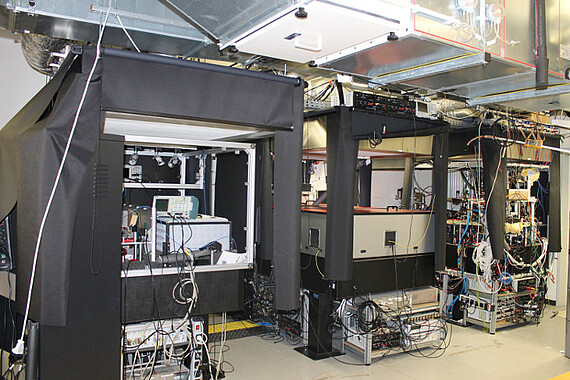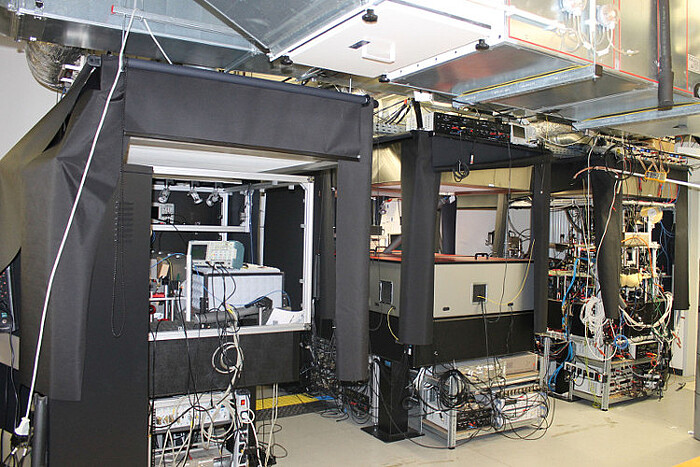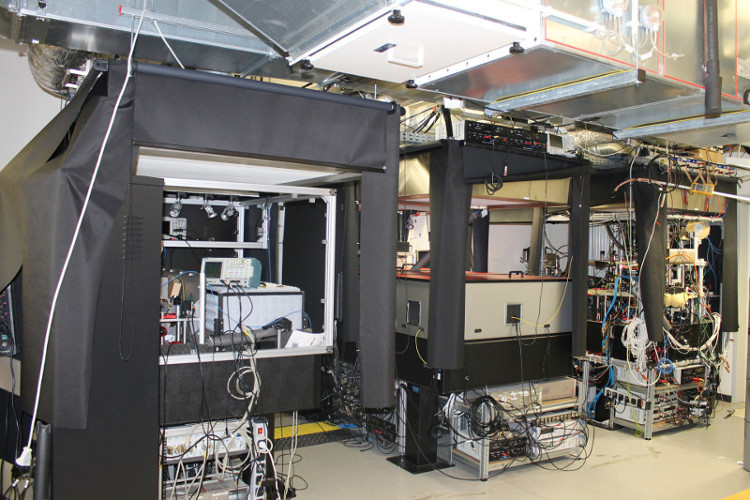Dipolar ultracold molecules are a powerful tool to direct observe exotic phenomena and to emulate different quantum systems with large control on all parameters. In our lab we aim to cool down 23Na39K molecules down to the hyperfine-ro-vibrational electronic ground state and employ them to unveil these phenomena.
Everything starts from hot samples of sodium and potassium that are collected in our main vacuum chamber after an initial cooling stage via Zeeman slowing and 2D-MOT trapping for 23Na and 39K, respectively. After laser cooling below Doppler limit, the atoms are loaded in a plugged magnetic quadrupole trap where the direct cooling of 23Na via microwave evaporation allows to cool the whole mixture thank to sympathetic cooling of potassium.
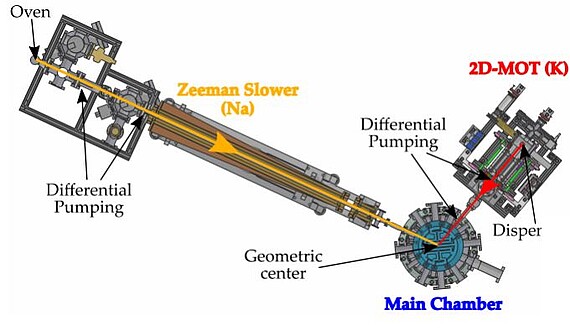
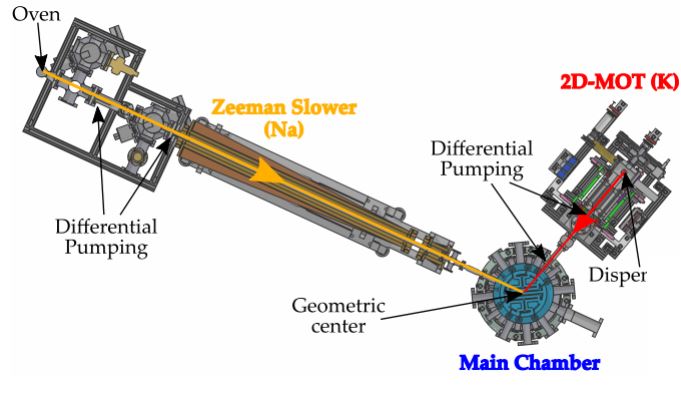

When the mixture reaches a temperature of some tens of microkelvin, collisions between sodium and potassium are too strong and we have to tune them by involving a magnetic Feshbach resonance. First we load the atoms into a crossed dipole trap and we apply a bias field with magnitude up to 900G. Thanks to this trick we could create the first doubly degenerate mixture of sodium and potassium. Cold mixtures allow us also to investigate for the fist time the collisional properties of 23Na and 39K in different hyperfine state combinations and compare our observations with recent theoretical predictions of our precious collaborators.
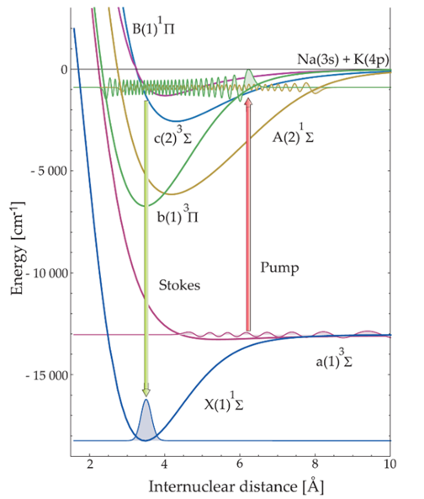


Next steps are the formation of Feshbach shallow-bound molecules and the subsequent transfer to the ground state via stimulated adiabatic Raman passage (STIRAP). The lasers are ready to this step and moreover we will be able to see single molecules in the optical lattice thanks to our already tested large numerical aperture objective.
A lot of work is on the way but we are closer than ever to the goal.
